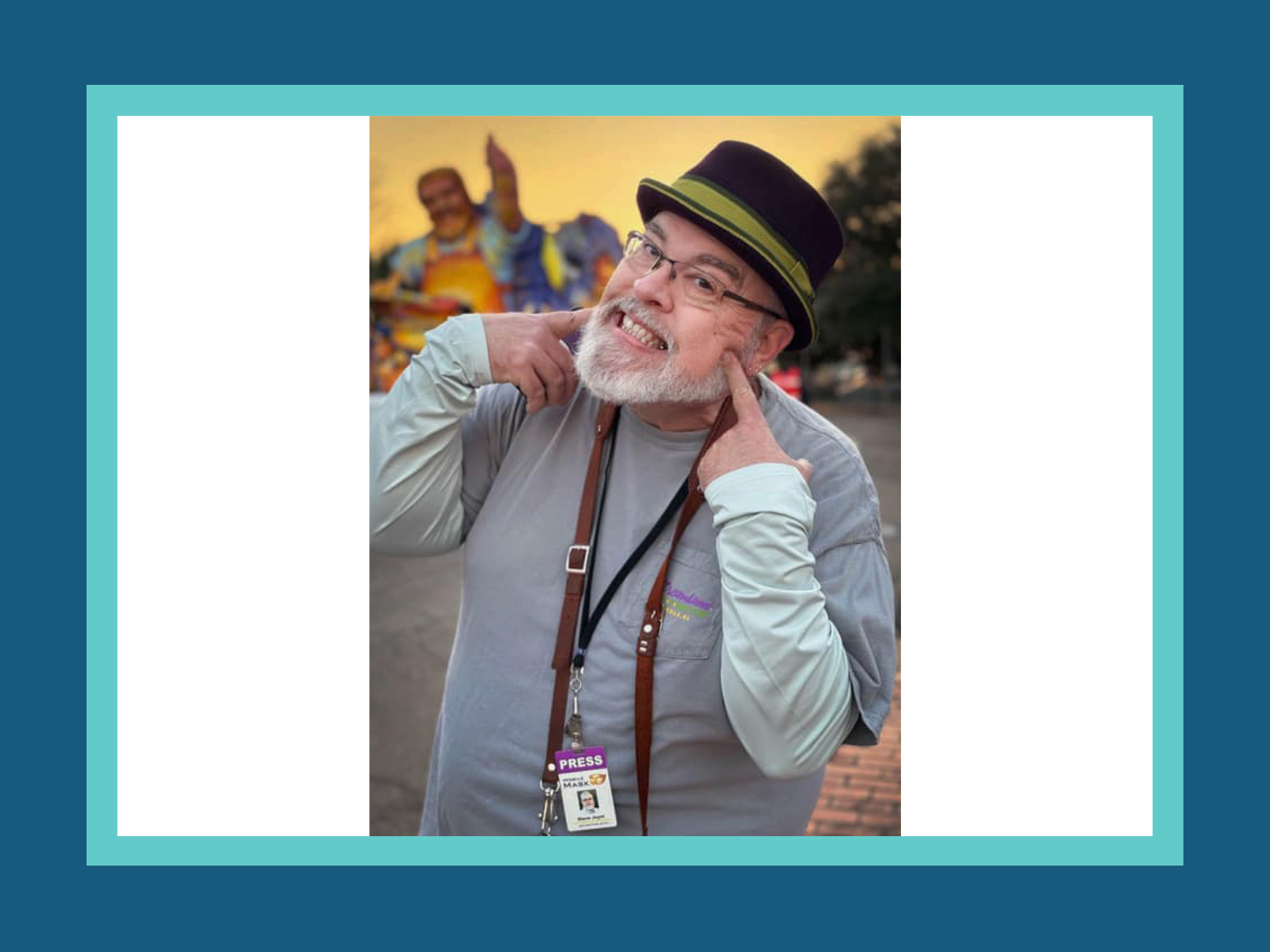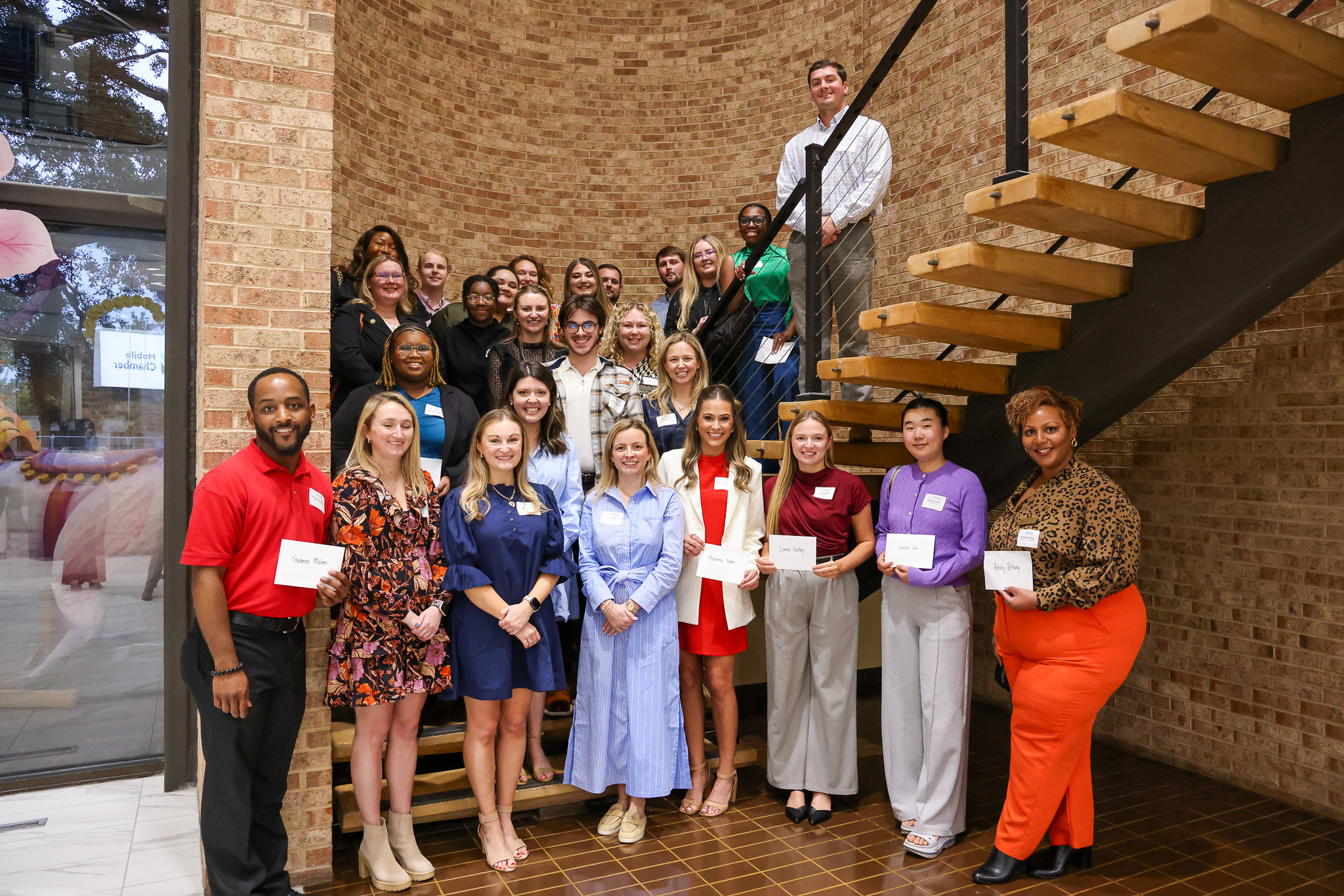Spotlight on Mobile Mask: Chronicling the Heartbeat of Mobile’s Mardi Gras and Passing the Torch
For years, Steve Joynt has been the driving force behind Mobile Mask, the ultimate guide to Mardi Gras in South Alabama. As he prepares to pass the torch, he reflects on what inspired him to create the publication, how it evolved and what’s next for him and Mrs. Mask.
What inspired you to create Mobile Mask, and how did it evolve over the years?
My inspiration was the Arthur Hardy Mardi Gras Guide in New Orleans. Arthur had been producing it for more than 30 years when he and I talked. I thought Mobile’s Mardi Gras deserved a high-quality magazine, full of feature stories and all of the schedules and maps needed in one place. Arthur, however, was doing no social media at the time, and I thought that Facebook and Twitter – as well as an extensive website – would be key to making the Mask the authority on Mardi Gras in south Alabama. The biggest evolution over the years was that the media and the people came to look at the Mask as the place to go for Mardi Gras information.
What makes Mobile’s Mardi Gras unique, and how did the Mobile Mask capture that?
Everything about our Mardi Gras is unique, and it starts with our mystic societies. The personalities of those organizations are a reflection of their unique histories and the people that are members and leaders of them. The Mask has always concentrated on the organizations and the artists that make Mobile’s Mardi Gras happen. I’ve tried to tell folks how they operate, how hard they work, how many resources they put on the line to make this amazing thing for us every year. I always tell them: “People don’t say this to you enough, but I will – Thank you!”
Looking back, what are you most proud of accomplishing through Mobile Mask?
That’s a toughie. I’m proud of so many things. The three Mardi Gras related historical markers that I’ve written and had erected around town spring to mind first. I was very proud to have contributed in a number of ways to the 2014 Mobile Art Museum’s Mardi Gras exhibition. I’m very proud of the annual Learning Lunch programs I’ve delivered at the History Museum of Mobile – this year will be my 12th. I’m proud of the real historical digging that I’ve done for the magazine and how a few of those stories are changing the way we talk about our Mardi Gras history.
Over the years, what has been your favorite Mardi Gras story or memory to cover?
It really seems like every story I’ve done has been my favorite, and my latest issue is always my favorite. So it’s really impossible to say in those terms. Every story I do teaches me something new about Mardi Gras that I didn’t know, and that’s been the best part – learning new stuff. I mentioned to Mrs. Mask just the other day about the time I was in New Orleans, interviewing Richard Valadie, the owner of The Royal Artists, which builds the floats for several of our parades. He and I were driving around, and he said, “Hey, do you want to see how Vernadean is coming?” Of course I did. It was the year they were building a whole new head for Vernadean, the iconic dragon for the Mystics of Time. Richard took me to a non-descript metal building in a nowhere part of town, and inside, Vernadean and several other large figures were being sculpted out of Styrofoam. Richard had hired that business to do that particular part of the Vernadean job because they were so darn good at it. I never knew that such a thing existed, but there they were: Styrofoam sculptors.
What do you think is the most misunderstood thing about Mobile’s Mardi Gras that you’ve worked to clarify through your platform?
A lot of people refer to Mardi Gras as a party, and I always say, “Anyone can throw a party. Put out a deli tray, put some beer in the fridge. Party.” No, it takes a very special place and very special people to stage a momentous festival every year that takes over the streets of downtown and beyond for weeks. Mardi Gras is part of Mobile’s DNA, and it’s so much more important than a party. Talk to the families that have been tied to one mystic society or another for generations. Those organizations have literally shaped those families. Their grown kids know: You can skip Christmas, but you’d better be back for Mardi Gras. I have tried hard to treat it like that very important, very special, and unique thing that it is. When I’ve taught at USA, I told students, “Wherever you go, whatever you do, you’ll be able to tell people, ‘Hey, where I went to college, Mardi Gras was a holiday.’”
What led to your decision to step away from Mobile Mask after this year?
I felt like I had plateaued. I wasn’t growing the magazine or the rest of the business anymore. I had taken it as far as I could, and it was time to hand it off to someone who could do more. Lagniappe has a staff of people and vehicles and a building and – most importantly – a very good reputation. I know the Mask will be in good hands.
What do you hope Mobile Mask’s legacy will be under Lagniappe’s direction?
My hope is the same of any proud parent, to see it grow and thrive and make people happy. I feel like many people know that if they want Mardi Gras info, the Mask is the first place they should go. I want to see that become a belief that you just can’t successfully navigate and enjoy Mardi Gras without Mobile Mask.
What’s next for you and Mrs. Mask?
We’ll be around. Mrs. Mask still has a real job. I will be a consultant for Lagniappe for at least their first year at the controls. I have at least one book in the works – maybe two. And there’s many art projects that I’m dying to dive into.
If you could sum up your experience with Mobile Mask in one sentence, what would it be?
Best job I ever had; hardest I ever worked; best boss, ever. (I cheated with the semi-colons.)
PHOTO CREDIT: Lynn Henderson Oldshue

Stay Connected
Fill out and submit the form below to get regular updates from Mobile Chamber delivered directly to your inbox.





